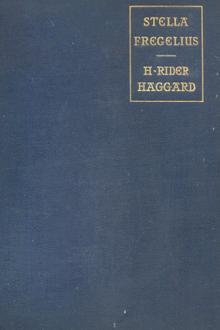The Story of the Volsungs (Volsunga Saga); with Excerpts from the Poetic Edda, - [e book reading free .txt] 📗

- Author: -
Book online «The Story of the Volsungs (Volsunga Saga); with Excerpts from the Poetic Edda, - [e book reading free .txt] 📗». Author -
Iceland had been known for a good many years, but its only dwellers had been Irish Culdees, who sought that lonely land to pray in peace. Now, however, both from Norway and the Western Isles settlers began to come in. Aud, widow of Olaf the White, King of Dublin, came, bringing with her many of mixed blood, for the Gaedhil (pronounced "Gael", Irish) and the Gaill (pronounced "Gaul", strangers) not only fought furiously, but made friends firmly, and often intermarried. Indeed, the Westmen were among the first arrivals, and took the best parts of the island—on its western shore, appropriately enough. After a time the Vikings who had settled in the Isles so worried Harold and his kingdom, upon which they swooped every other while, that he drew together a mighty force, and fell upon them wheresoever he could find them, and followed them up with fire and sword; and this he did twice, so that in those lands none could abide but folk who were content to be his men, however lightly they might hold their allegiance. Hence it was to Iceland that all turned who held to the old ways, and for over sixty years from the first comer there was a stream of hardy men pouring in, with their families and their belongings, simple yeomen, great and warwise chieftains, rich landowners, who had left their land "for the overbearing of King Harold," as the "Landnamabok" (7) has it. "There also we shall escape the troubling of kings and scoundrels", says the "Vatsdaelasaga". So much of the best blood left Norway that the king tried to stay the leak by fines and punishments, but in vain.
As his ship neared the shore, the new-coming chief would leave it to the gods as to where he settled. The hallowed pillars of the high seat, which were carried away from his old abode, were thrown overboard, with certain rites, and were let drive with wind and wave until they came ashore. The piece of land which lay next the beach they were flung upon was then viewed from the nearest hill-summit, and place of the homestead picked out. Then the land was hallowed by being encircled with fire, parcelled among the band, and marked out with boundary-signs; the houses were built, the "town" or home-field walled in, a temple put up, and the settlement soon assumed shape. In 1100 there were 4500 franklins, making a population of about 50,000, fully three-fourths of whom had a strong infusion of Celtic blood in them. The mode of life was, and is, rather pastoral than aught else. In the 39,200 square miles of the island's area there are now about 250 acres of cultivated land, and although there has been much more in times past, the Icelanders have always been forced to reckon upon flocks and herds as their chief resources, grain of all kinds, even rye, only growing in a few favoured places, and very rarely there; the hay, self-sown, being the only certain harvest. On the coast fishing and fowling were of help, but nine-tenths of the folk lived by their sheep and cattle. Potatoes, carrots, turnips, and several kinds of cabbage have, however, been lately grown with success. They produced their own food and clothing, and could export enough wool, cloth, horn, dried fish, etc., as enabled them to obtain wood for building, iron for tools, honey, wine, grain, etc, to the extent of their simple needs. Life and work was lotted by the seasons and their changes; outdoor work—fishing, herding, hay-making, and fuel-getting—filling the long days of summer, while the long, dark winter was used in weaving and a hundred indoor crafts. The climate is not so bad as might be expected, seeing that the island touches the polar circle, the mean temperature at Reykjavik being 39 degrees.
The religion which the settlers took with them into Iceland—the ethnic religion of the Norsefolk, which fought its last great fight at Sticklestead, where Olaf Haraldsson lost his life and won the name of Saint—was, like all religions, a compound of myths, those which had survived from savage days, and those which expressed the various degrees of a growing knowledge of life and better understanding of nature. Some historians and commentators are still fond of the unscientific method of taking a later religion, in this case christianity, and writing down all apparently coincident parts of belief, as having been borrowed from the christian teachings by the Norsefolk, while all that remain they lump under some slighting head. Every folk has from the beginning of time sought to explain the wonders of nature, and has, after its own fashion, set forth the mysteries of life. The lowest savage, no less than his more advanced brother, has a philosophy of the universe by which he





Comments (0)